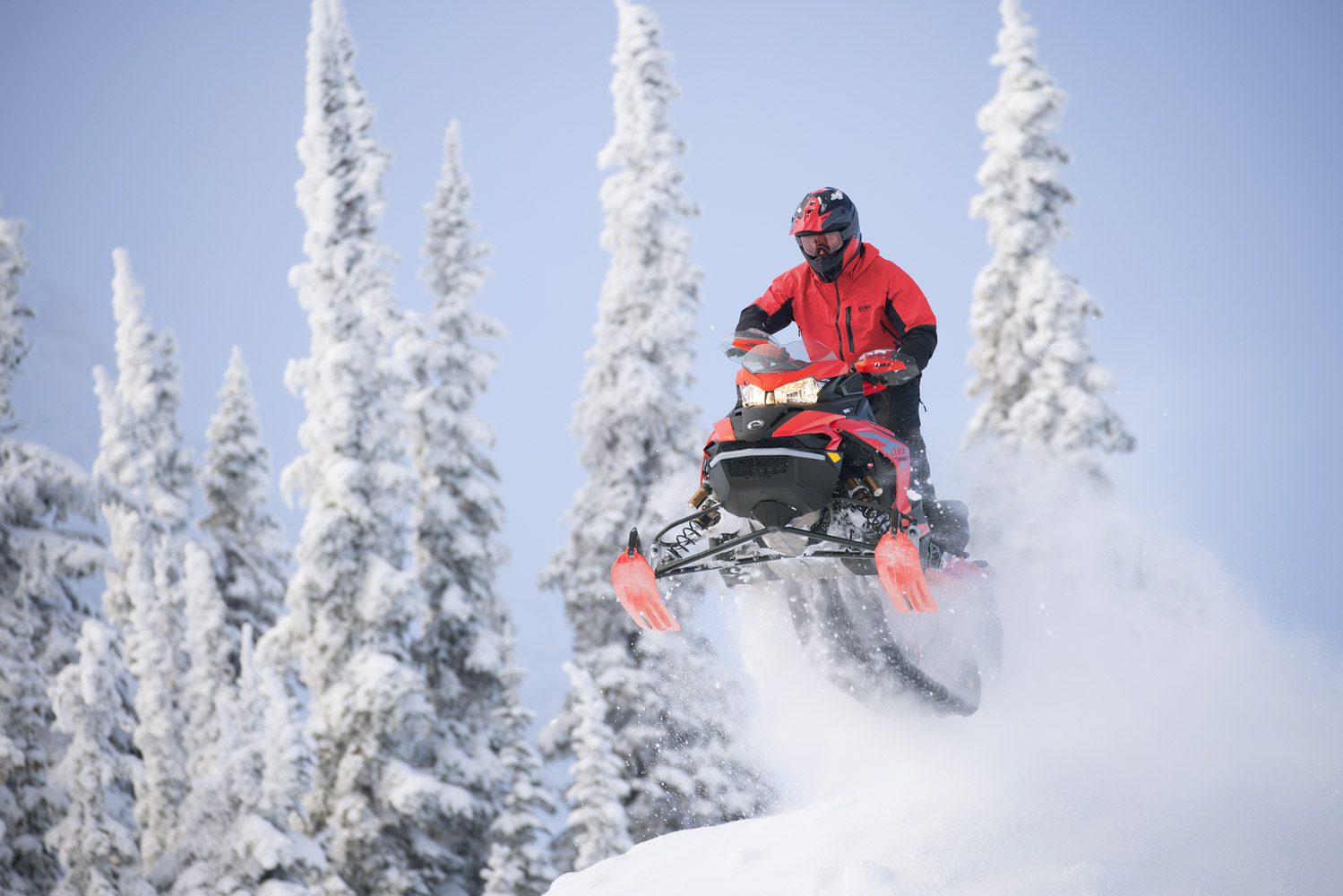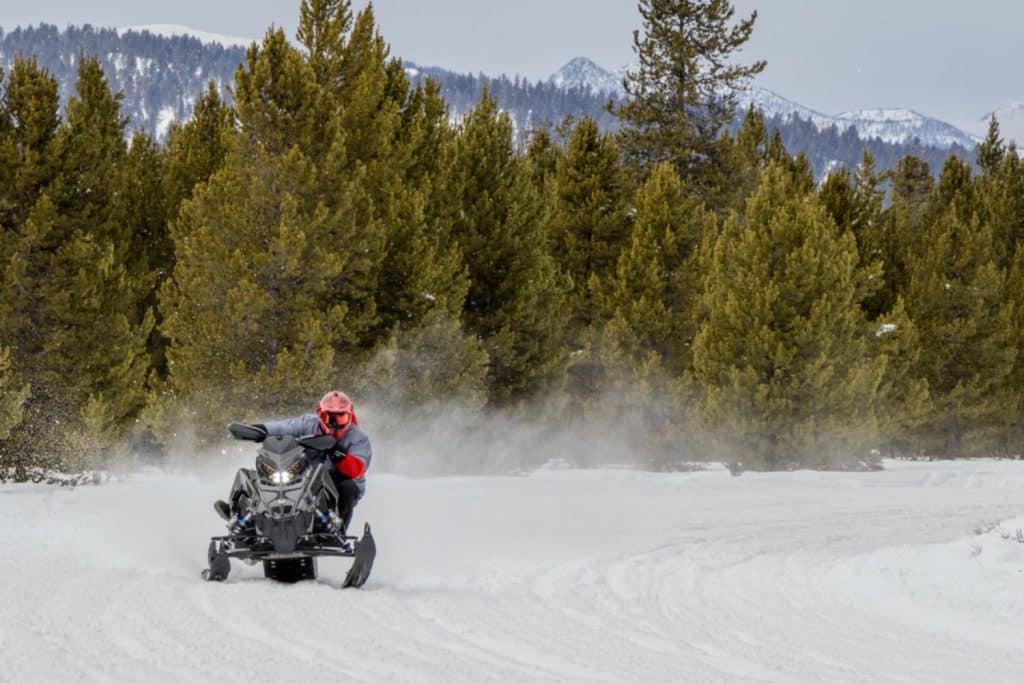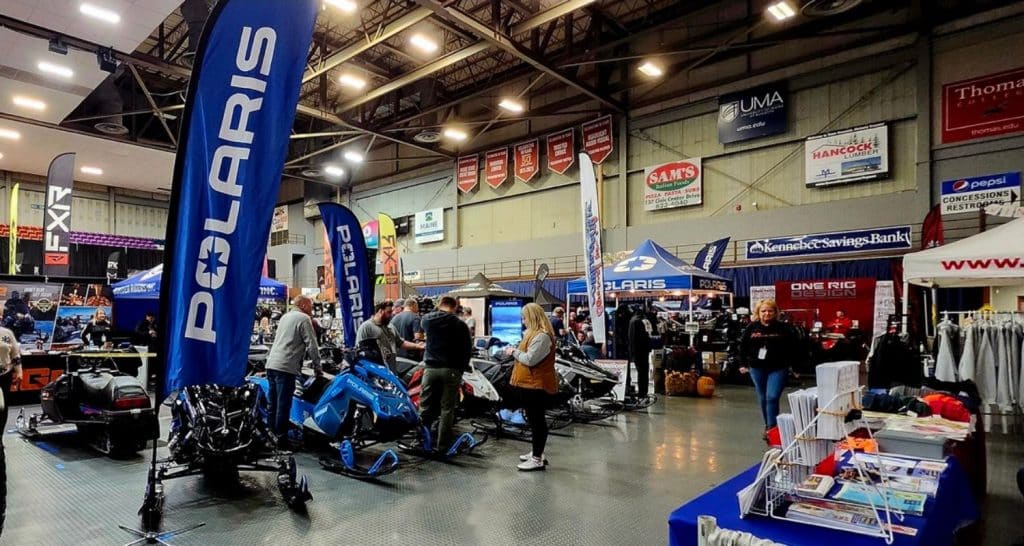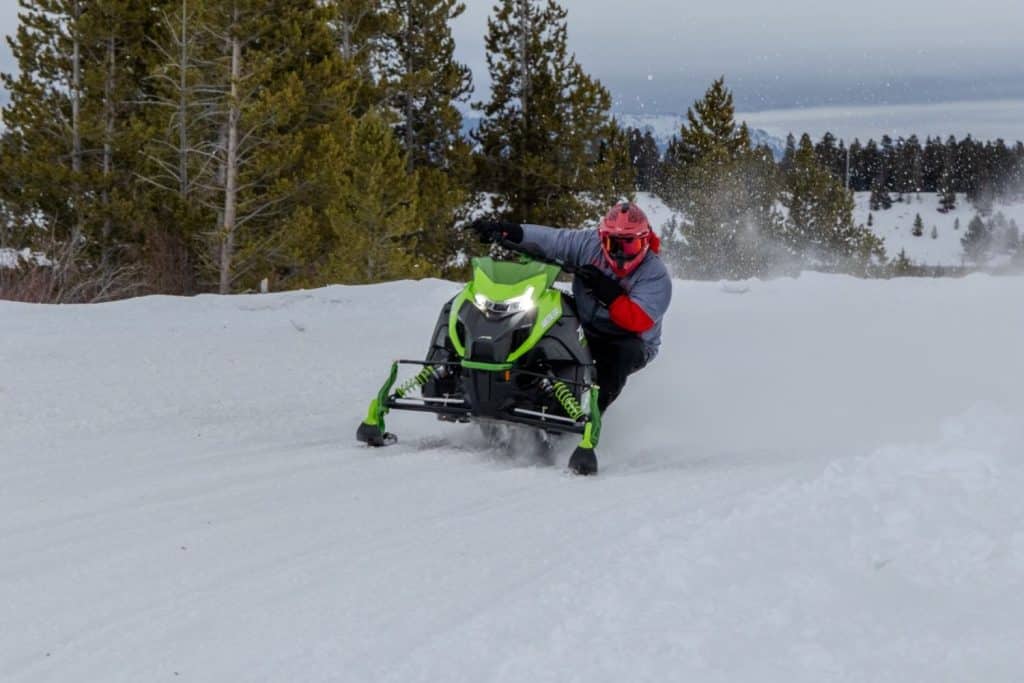Lynx Rave 2021 Test. The 2020-2021 season was full of all kinds of twists and turns never seen in the world of snowmobiling, who won’t remember that winter without relays, where we had to eat our lunch outside in the cold? It’s not always easy to try to eat a soup at -25 degrees with gloves on. However, I am sure that many of you did it, even if it was a bit discouraging at times. The pandemic will not be the only memory that will remain engraved in the annals of 2020-2021, it will also sign the arrival of a new player among the four manufacturers already in place… Lynx!
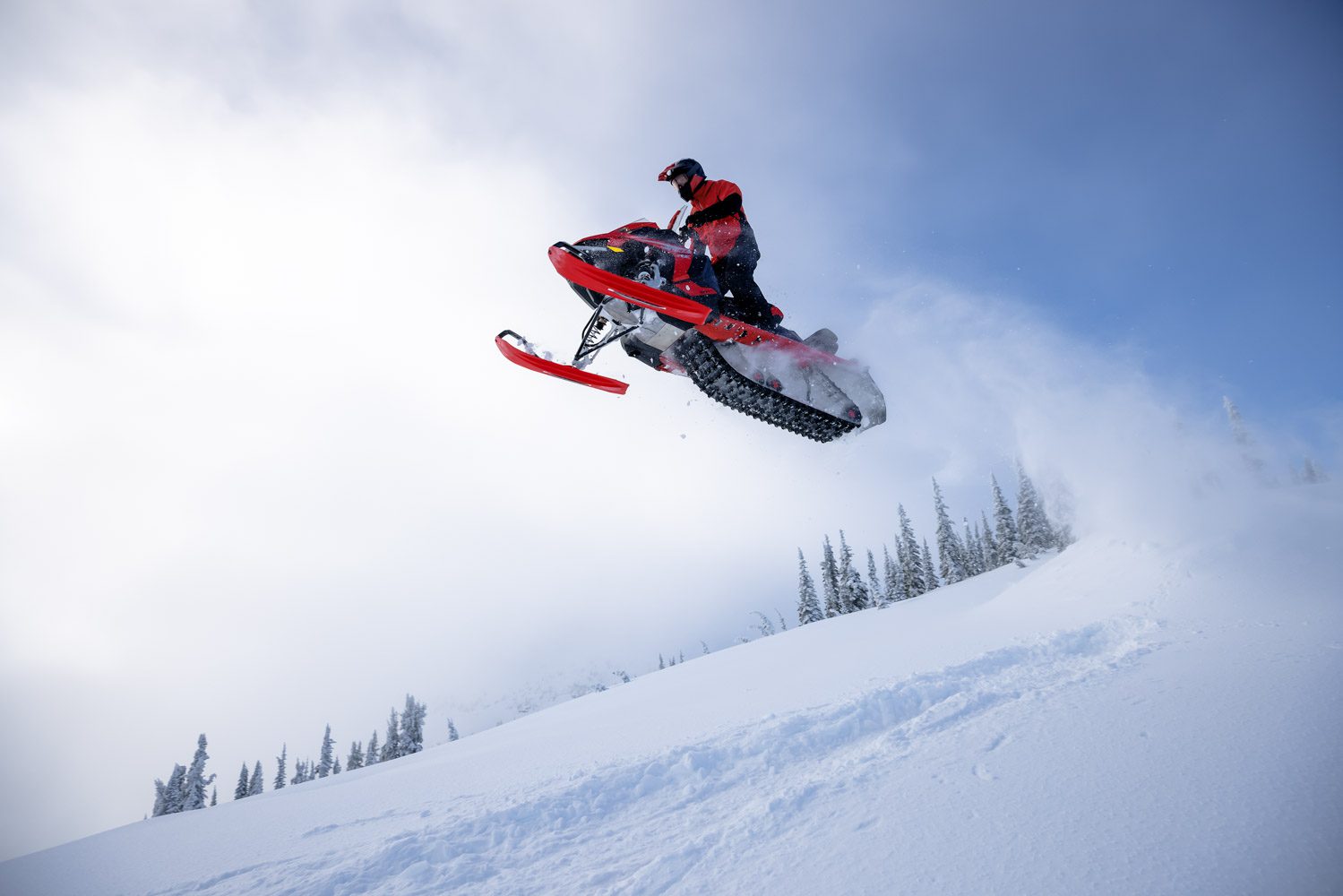
History
Some may say, “Is this really a new manufacturer?” It’s mostly a BRP! They’re right, but when you take a closer look at the three Lynx 2021 models available in Canada, you’ll quickly notice a lot of differences that allow us to say that this is indeed a new player among the big boys.
Although Lynx is a subsidiary of the multinational BRP and appears to be new to us, the fact remains that it has an extremely rich history in the Scandinavian countries. Many will certainly be surprised to learn that the first Lynx snowmobiles were produced in 1967! The Lynx story is divided into five chapters. The first one, entitled the beginning, explores the years from 1967 to 1979. Kiimaneva Kurikka, Finland was the first place where the AS50 prototype was tested in the summer in a peat field. At that time, four models were available: Lynx 20 (10 HP, 180 CC), 30R (16 HP, 277 CC), 30S (20 HP, 293 CC) and 40 (20 HP, 293 CC). Subsequently, other models were introduced such as the Lynx300 GLX, Lynx400 GLX, Lynx535 GLX, and the 600 GLX series. The second chapter covers the years 1979 to 1985, when the company carved out a place for itself in the racing world, but also in the utility world. Among the new models was the GLS3300, with independent front suspension and rear slide suspension. The third part of the story is called innovation, covering the years 1985 to 1995. It was in this decade that Lynx attacked the utility market with the Lynx GLX 5900, an industry first, with a long track for work combined with a slide suspension. This was one of the company’s greatest achievements, and was copied by many other manufacturers in the years that followed. And it was also in 1985 that the first sport model in production was born, the GLS3300! One of the highlights was probably the acquisition of Lynx by Bombardier in 1988. At that time, Lynx was already using Rotax engines owned by Bombardier. Chapter 4, Growth, covers the years 1995 to 2008. Lynx’s expansion into the world of snowcross racing came with the legendary Janne Tapio, multiple world champion, dominating the circuits in Europe! These years also include the beginnings of the PPS suspension still used today!
The last chapter, entitled the present and the future, rolls out the carpet on new technologies such as the XU work platforms, mountain and more. But above all, it ensures an innovative continuity that brings us to a snowmobile that is very well adapted to our present, but above all, perfectly adapted to the European market.
For whom and for what condition?
The Lynx RAVE is the only trail model that exports to North America. To fully understand its design, it is important to know the terrain conditions in which the Swedes, Finns and other Scandinavians travel. Like here, these countries have a network of trails that allow them to move from one place to another. A bit like here, they have directions with distances, allowing them to travel from one town or village to another in a safe way. However, unlike us, these trails are not surfaced, so they ride in continuously bumpy conditions, much like backcountry riding for example. This means that for them, perfect surfacing conditions with exemplary handling in the curves are much less applicable to their situation. Amateurs often advocate an upright and more aggressive riding style to deal with the various difficulties of an unsurfaced trail.
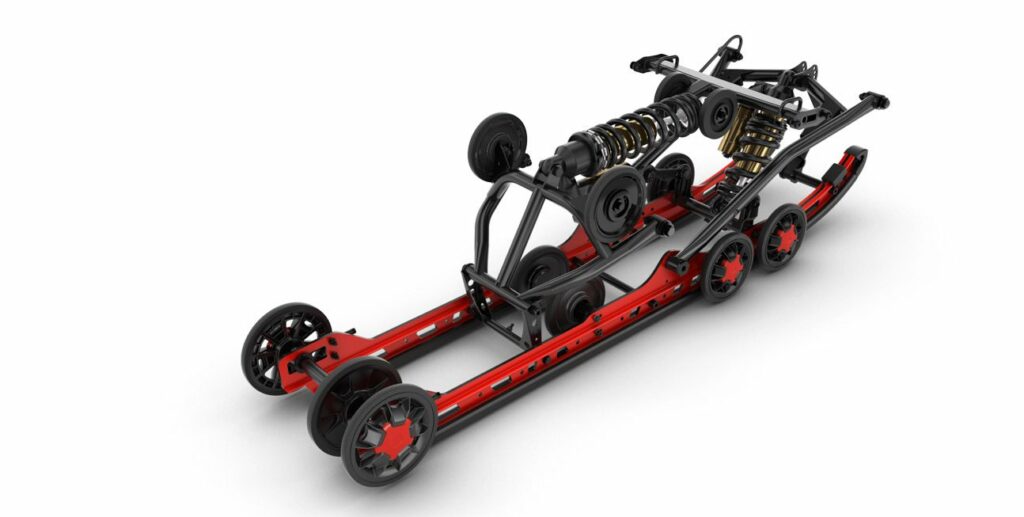
Chassis and engine
The Lynx RAVE chassis is almost identical to the Backcountry version that BRP has been selling here for a few years. As for the engine, they chose the 850 two-cylinder two-stroke direct injection version from ROTAX, which BRP has owned for several years. ROTAX also manufactures the engines for the Aprilia motorcycle line, the BMW motorcycle engines in Germany, not to mention the entire line of Can-AM, Sea-Doo, Ryker, Spyder, etc.
Lynx Rave 2021 Test – Suspension
This is getting interesting… Since their conditions are very much like Backcountry, you won’t be surprised to learn that their PPS rear suspension is not coupled. The PPS 3 3500, which is actually the third generation of the same name, is very progressive, which helps keep the front end of the sled on the ground for a short period of time when the throttle is depressed. Although total suspension travel data was not available at the time of writing, we can say that it is very similar to what we know here. For the extremes, this is where it gets interesting, the manufacturer uses huge KYB 46mm HLCR Kashima external reservoir shocks! Never seen on a production snowmobile this side of the ocean before. As they say: Bring on the bumps!!!
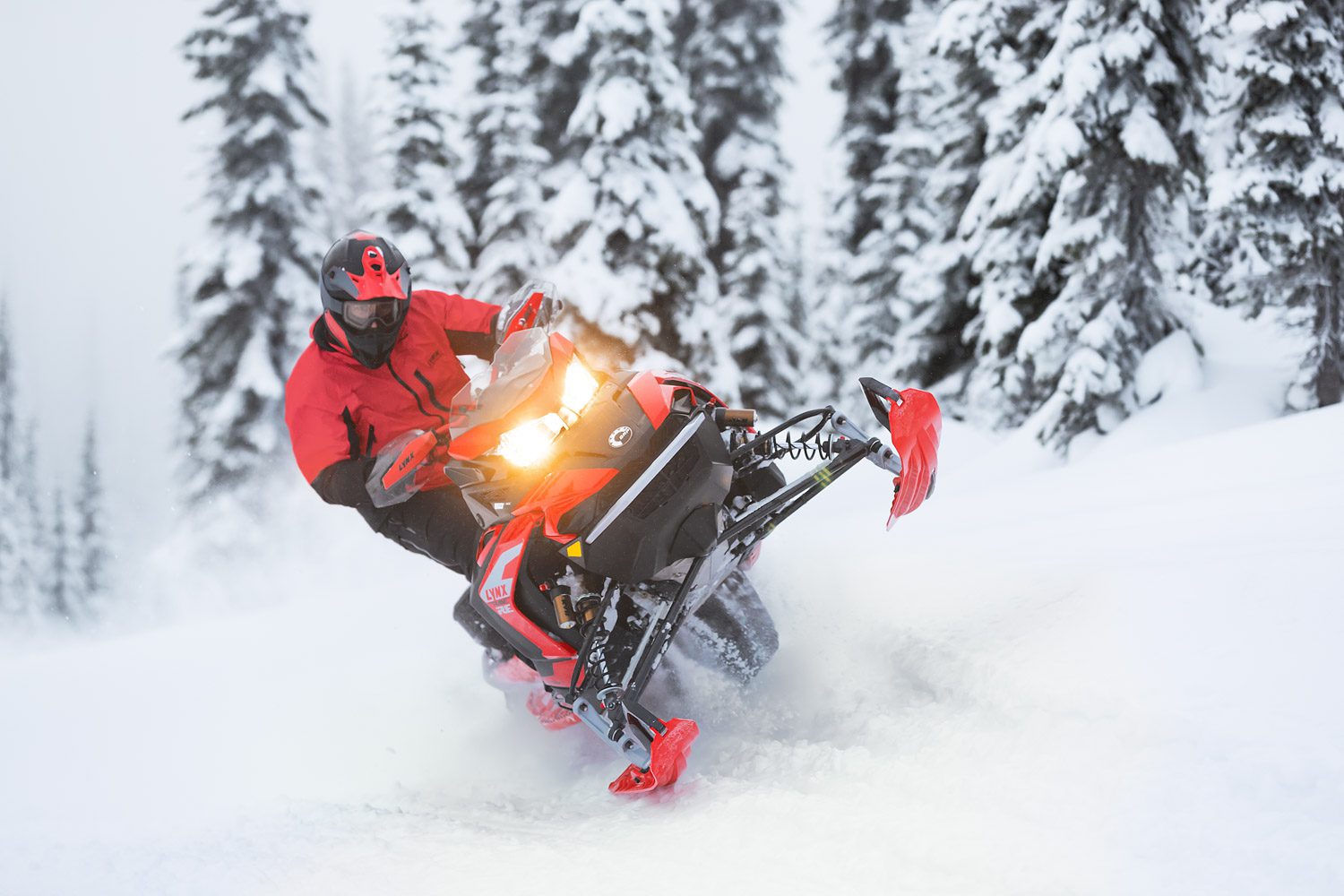
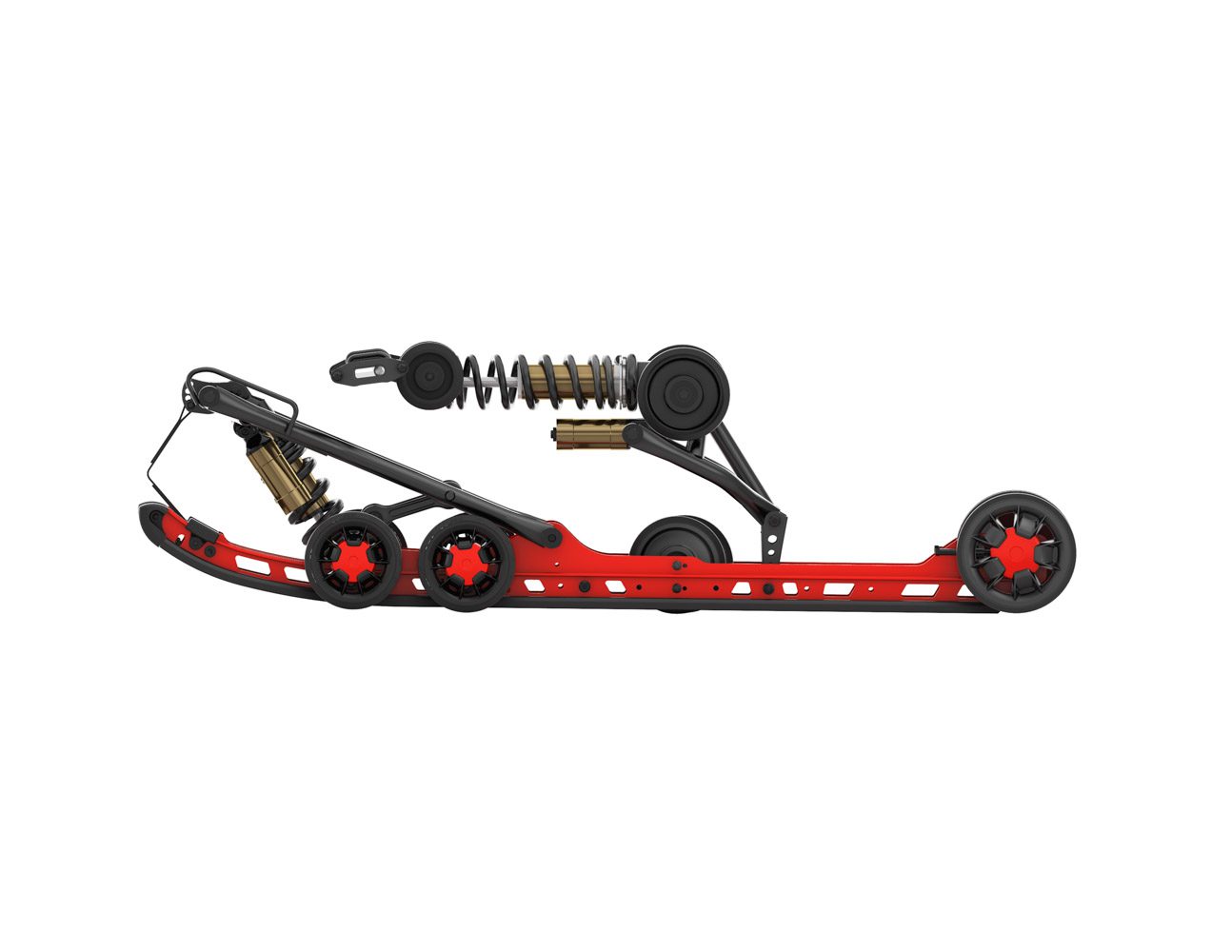
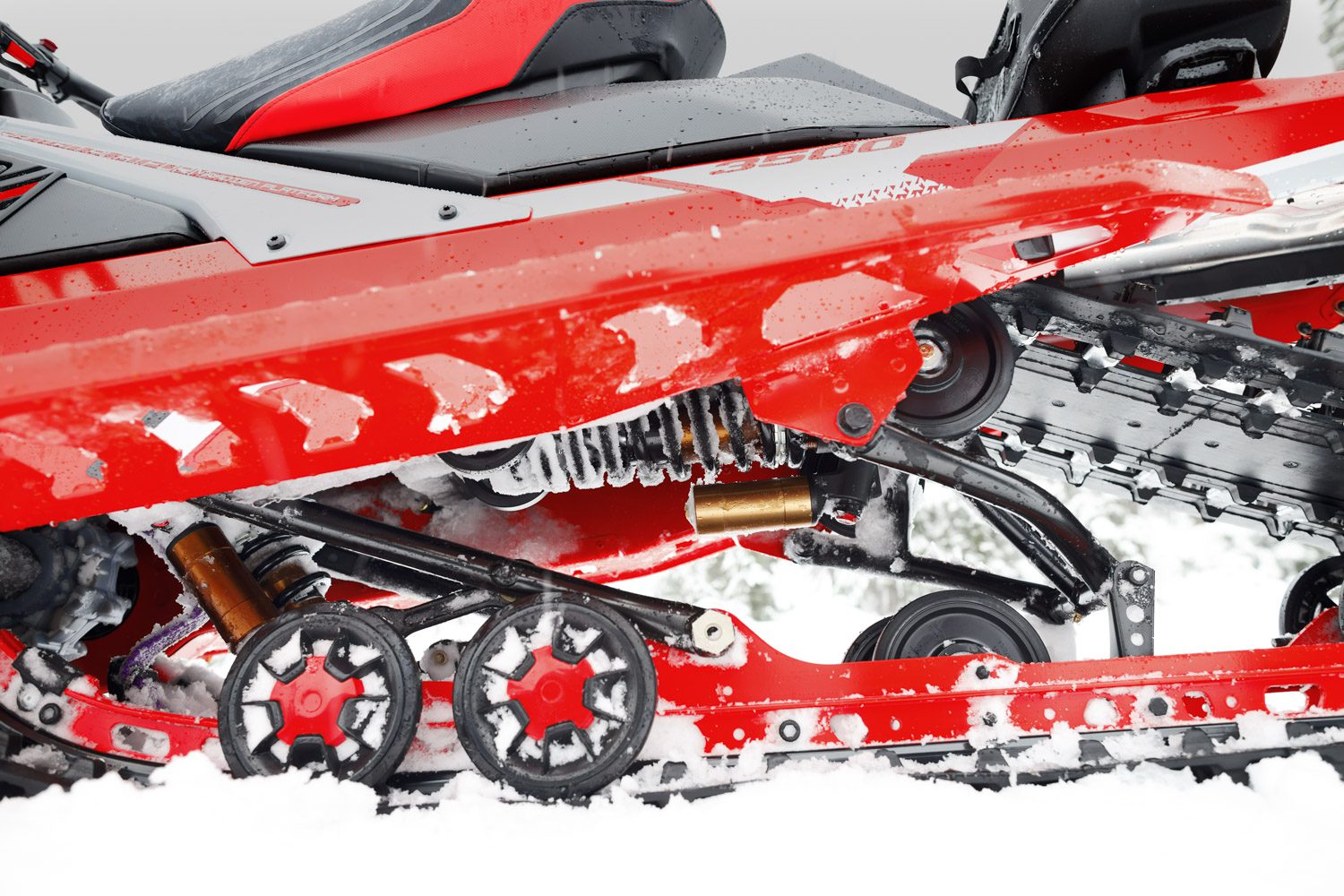
Up front, we find a geometry very similar to the RAS 3 found on BRP snowmobiles. Lynx has named it LFS+, an independent suspension with a stabilizer bar, which offers a 42.2-inch ski spacing. As for the rear, it’s a bold move with 46mm KYB HLCR Kashima!
Lynx Rave 2021 Test – The Skis
Off-piste and ungroomed trails are synonymous with Ski-Doo’s DS-2 or DS-3, skis that have proven themselves over the years. Lynx engineers have a similar thought with the Blade XC+. They have a very aggressive vocation with two superimposed keels, which offer a very good grip, I would say an aggressiveness between the DS-2 and the DS-3. A very aggressive ski offering excellent grip in turns.
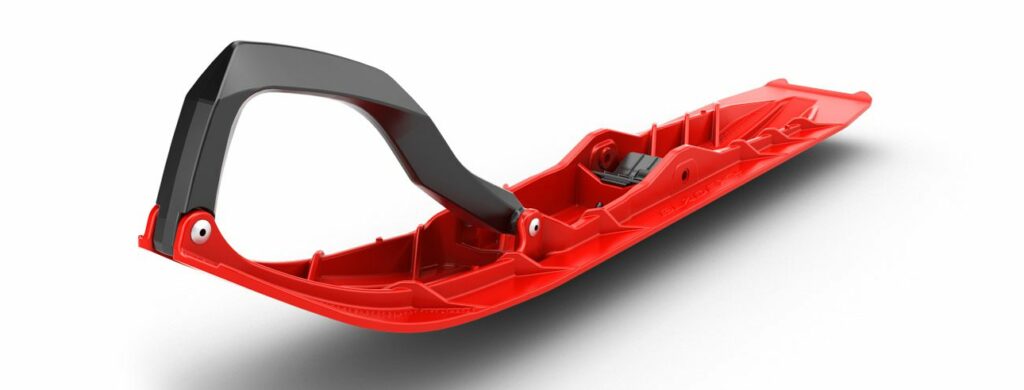
Lynx Rave 2021 Test On the trail
I rode the snowmobile for about 1,000 kilometers, which allowed me to encounter many different trail conditions and to discover the advantages and disadvantages of our sled. Is it any different from an MXZ or a Renegade? Absolutely! The ride and handling are very different, the Lynx skis are very aggressive, except during acceleration where the skis lift, the grip on the trail is excellent and aggressive, it takes some getting used to at first. When you first sit on the snowmobile, it feels like you’re sitting lower, and you are slightly lower. The rear suspension is a bit lower than on Ski-Doo snowmobiles. This is an advantage when it comes to the track, which I found extremely easy to turn. You quickly notice when you release the throttle, the snowmobile continues with a much slower decrease in speed than on another model. This becomes very interesting for the top speeds, which I found to be very impressive.
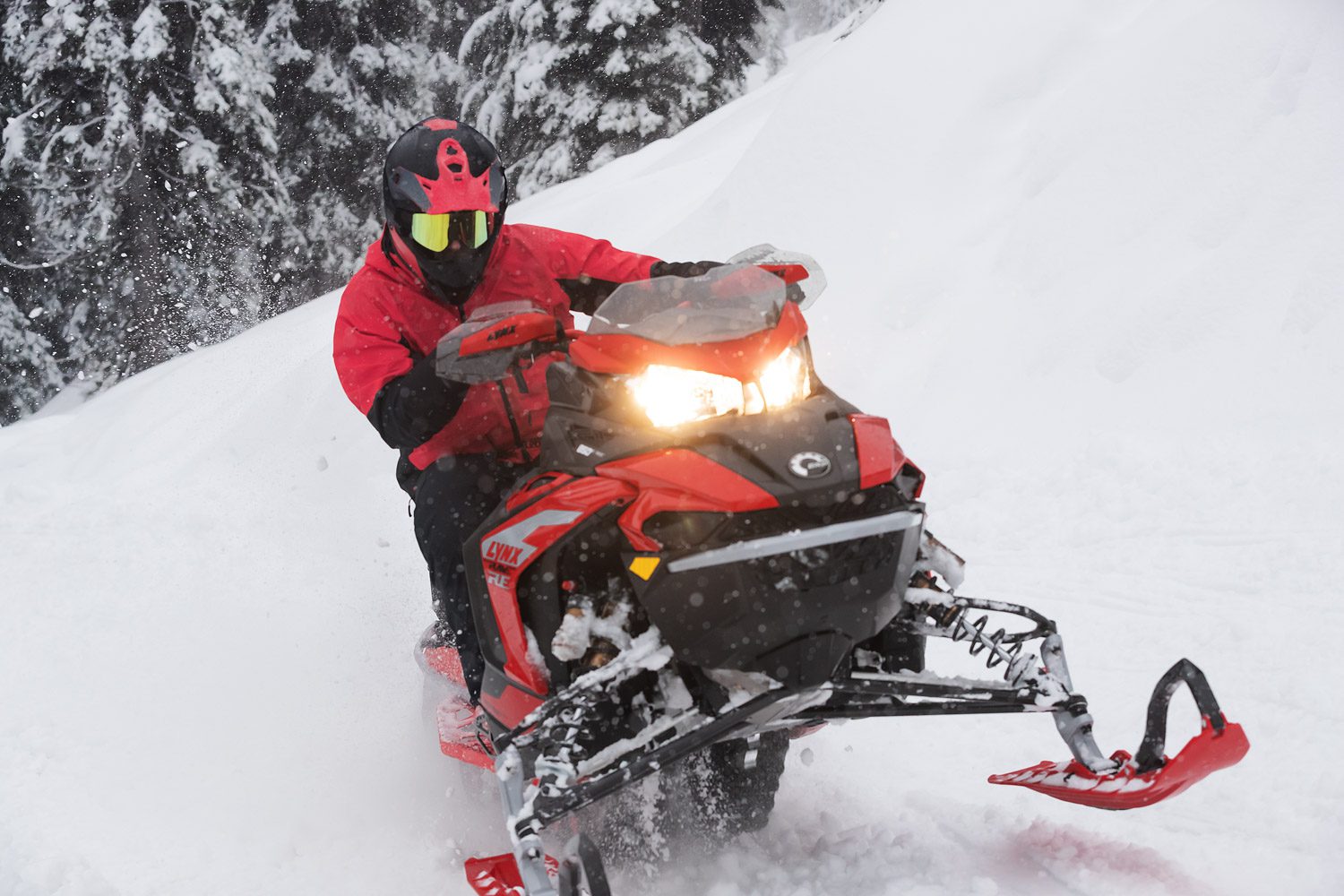
The Blade XC+ skis are very aggressive on the trail, their keel and single sided design causes a bit of swaying on rough trail conditions. However, in rougher conditions, they give the rider a good feeling of safety in turns, which leads us to push a little more in late day conditions, which we must say, is their reality.
The rear suspension is extremely progressive, the harder you push it, the stiffer it gets, after several hundred kilometers in sometimes very bumpy conditions, I never reached the limit of the suspension. It’s designed to take it… In small bumps, the suspension remains relatively stiff, but it does the job, it’s in the big bumps at the end of the day that we appreciate its reaction. It’s the same with the front of the RAVE, the KYB 46 mm HLCR Kashima shocks give a little backlash in the small bumps, but when we push the audacity in the big bumps, they give us a feeling of invincibility, we want more!
Will the Lynx carve out their place in the Quebec market? Certainly! Is it one of the best trail snowmobiles? The answer is no. But is it one of the best 50/50s? Yes, especially for those who ride very aggressively. I would say that the BRP model that comes closest is the Backcountry XRS, but with an even more progressive and stiffer suspension at the end.
It is essential to thank the Contant group and especially François Clairoux who, without him, the test of this snowmobile would not have been possible. Thank you Francois and the team at Contant, it’s always a pleasure !
Enjoy the 2021-2022 season!

